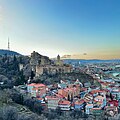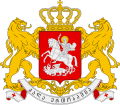The following list of Georgian cities is divided into three lists for Georgia itself, and the disputed territories of Abkhazia and South Ossetia. Although not recognized by most countries, Abkhazia and South Ossetia have been partially de facto independent since, respectively, 1992 and 1991 and occupied by Russia since 2008 Russo-Georgian War.







